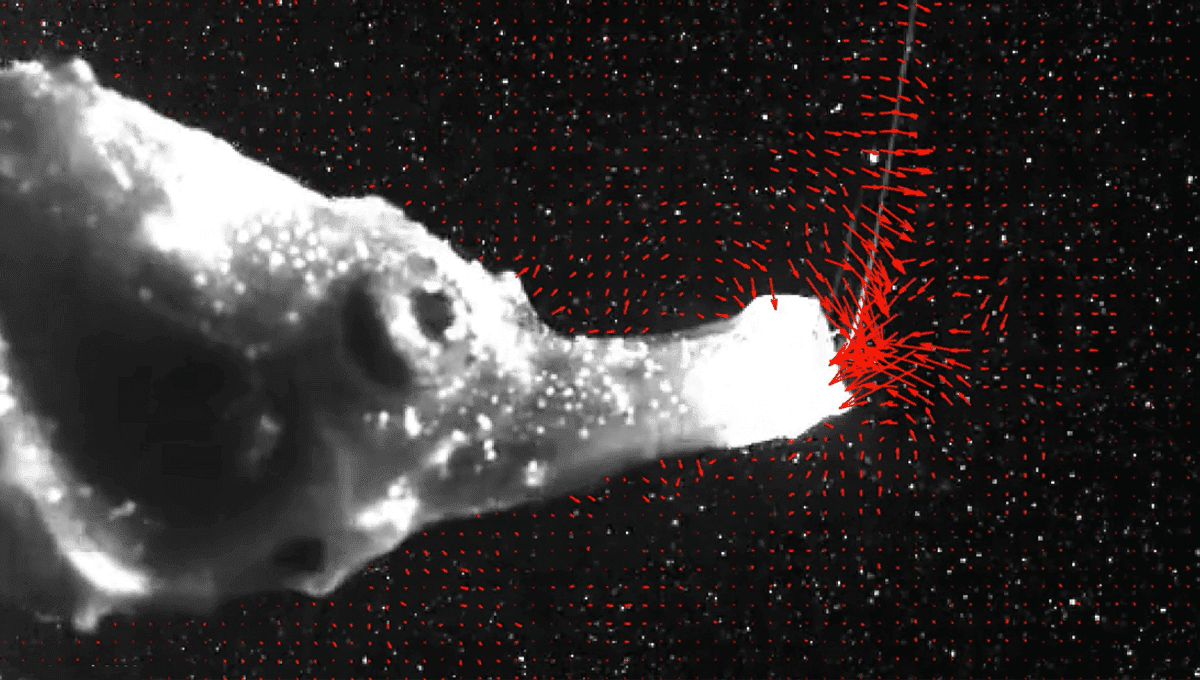
The animal kingdom is full of species with the muscle power to make rapid movements. Some species have even evolved latch-mediated spring-actuated (LaMSA) mechanisms that help them move even faster, letting them catch prey, jump higher, and close their jaws faster than ever. These types of LaMSA actions are usually found in invertebrates but now a new vertebrate has joined the list in the form of some seriously slurpy seahorses.
These LaMSA actions work like those children’s toys where a slow movement is used to load an elastic part before the tension is abruptly released. Syngnathiformes, the animal order that includes seahorses, pipefishes, and snipefishes, capture prey using a technique known as “pivot feeding”. This means the head of a seahorse can be turned upwards towards a prey item within a matter of milliseconds. However just turning to be near the prey is not quite enough, the seahorses also need to be able to rapidly slurp the prey into their snouts to avoid them escaping.
Seahorses feed by a method similar to sucking up food in a vacuum cleaner known as suction flow. The team found that to be successful during prey capture, the seahorses had to simultaneously use the pivot feeding technique and generate a suction flow allowing them to slurp up their prey.
They discovered that the suction flows are eight times faster than expected based on the size of the seahorse snouts. They also identified that seahorse suction flow peaks around 2.1 milliseconds, with pivot feeding peaking at an extremely fast 2.5 milliseconds. The bluegill (Lepomis macrochirus), by contrast, has a suction flow peaking at 33 milliseconds. Loser.
So how can these super speedy slurpy seahorses achieve these impressive speeds? The team found that the epaxial tendons, which are connected to the supraoccipital bone at the back of the seahorse’s head, are primed to recoil fast. The elastic energy is stored in these tendons much like a child’s wind-up toy. This reveals a new LaMSA movement within the seahorses. The team also think that another tendon, called the sternohyoideus tendon, contracts during feeding helping to generate the suction flows.
Overall, the team conclude that the seahorses are able to slurp their prey especially quickly because two things are able to happen simultaneously thanks to their LaMSA system, which is controlled by two tendons within the head. This is vital for the seahorses because their prey can also escape extremely fast, meaning the seahorses have to turn and slurp faster before the prey can realize what’s happening and initiate an escape response.
The paper is published in Proceedings Of The Royal Society B.
Source Link: Powerful Slurpy Seahorses Suck Up Their Prey In A Fraction Of A Second